Juniper JN0-649 Enterprise Routing and Switching Professional (JNCIP-ENT) Exam Practice Test
Enterprise Routing and Switching Professional (JNCIP-ENT) Questions and Answers
You are asked to configure an 802.1X solution that supports dynamic VLAN assignment.
In this scenario, which two modes support using vendor-specific attributes (VSAs)? (Choose two.)
You are asked to establish interface level authentication for users connecting to your network. You must ensure that only corporate devices, identified by MAC addresses, are allowed to connect and authenticate. Authentication must be handled by a centralized server to increase scalability.
Which authentication method would satisfy this requirement?
Which three configuration parameters must match on all switches within the same MSTP region? (Choose three.)
You have scheduled maintenance operations for one of the devices in your OSPF network.
Referring to the exhibit, which three statements are correct? (Choose three.)
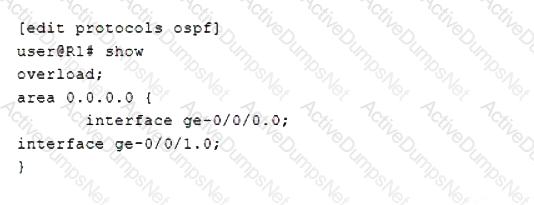
Referring to the exhibit, how will router E quickly learn that the remote MAC addresses are no longer reachable through the router attached to the failed link?
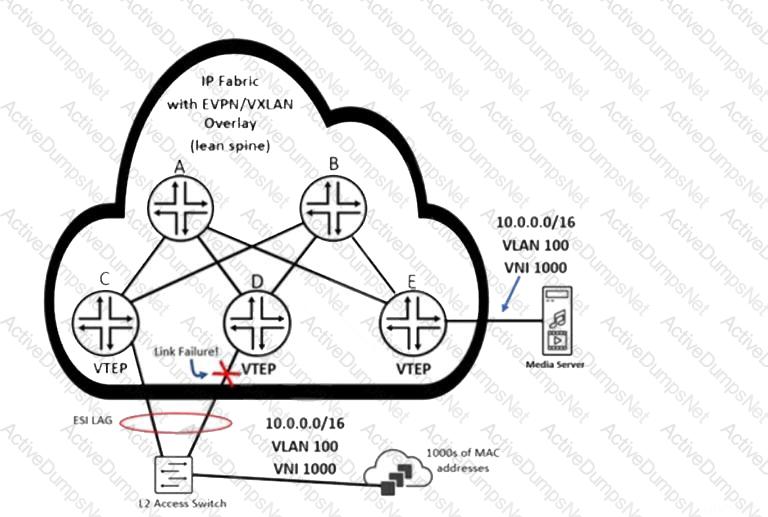
Which address range is used for source-specific multicast?
You are asked to enforce user authentication using a captive portal before users access the corporate network.
Which statement is correct in this scenario?
What are two similarities between OSPFv2 and OSPFv3? (Choose two.)
You are troubleshooting connectivity between an EVPN spine switch configured as a route reflector and a leaf node with an IP address of 10.30.100.6.
Referring to the exhibit, what is the problem?
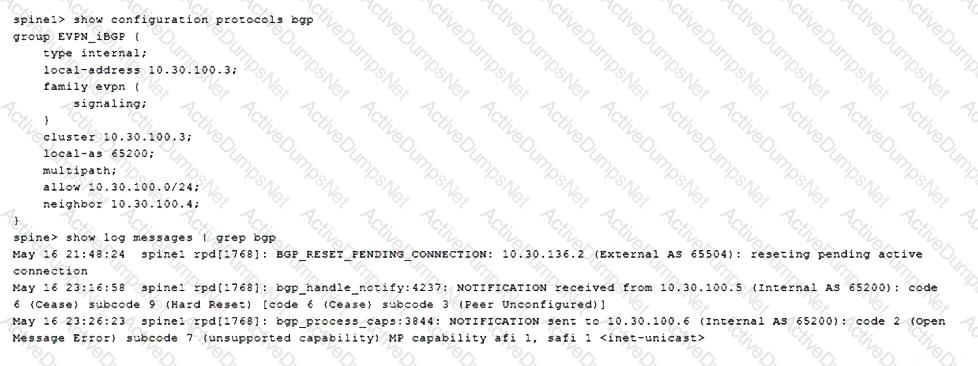
A user is attempting to watch a high-definition video being streamed from the media server over the network. However, the user complains that the experienced video quality is poor. While logged on to router B, a Juniper Networks device, you notice that video packets are being dropped.
In this scenario, what would solve this problem?
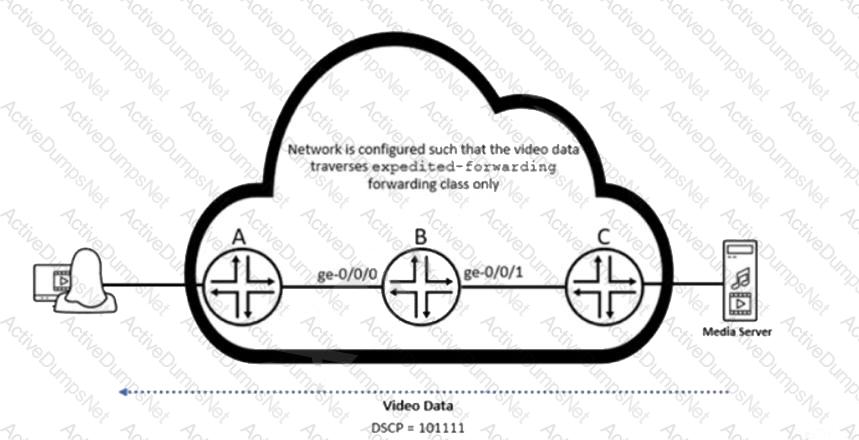
You are asked to configure 802.1X on your access ports to allow only a single device to authenticate.
In this scenario, which configuration would you use?
The connection between DC1 and DC2 is routed as shown in the exhibit.
In this scenario, which statement is correct?
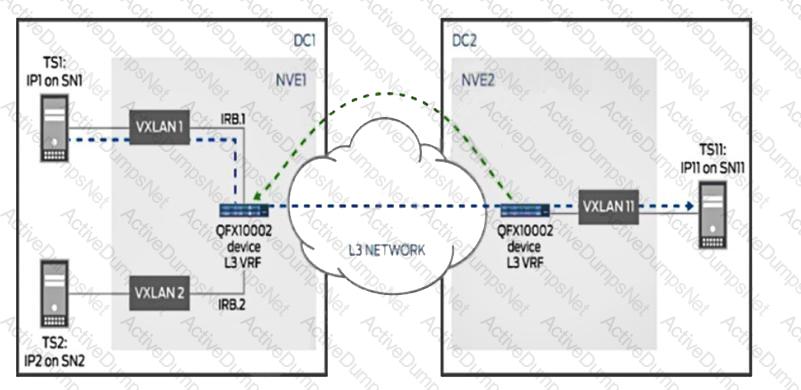
In OSPF, how does a router ensure that LSAs advertised to a neighboring router are received?
Referring to the exhibit, which two statements are correct? (Choose two.)
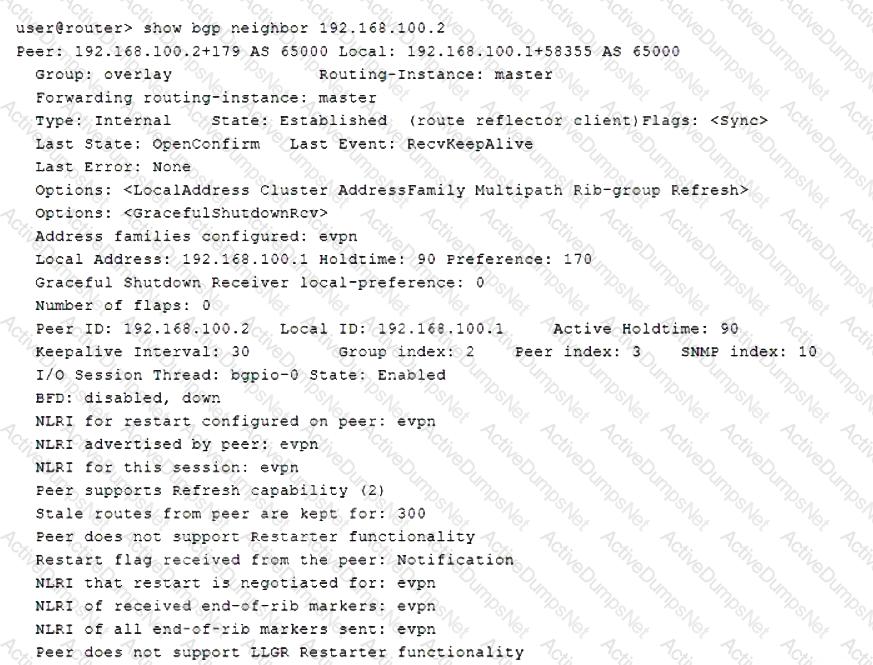

Which three MSTP parameters must match on all switches in the same MST region? (Choose three.)
You want to provide Layer 2 connectivity between campus sites using Ethernet switches through a metro Ethernet service provider who is using Q-in-Q tagging on their network.
Referring to the exhibit, what are two design considerations in this environment? (Choose two.)
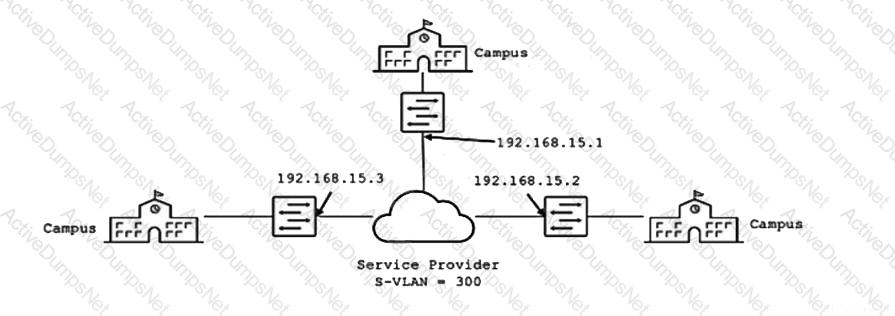
Your EX Series switch has IP telephones and computers connected to a single switch port. You are considering implementing the voice VLAN feature to help with this setup.
In this scenario, which two statements are correct? (Choose two.)
BGP multipath or multihop are not configured in your network.
In this scenario, what is the correct sequence for BGP active route selection?
Referring to the exhibit, which LSA type is used to advertise 192.168.1.0/24 to R5?

